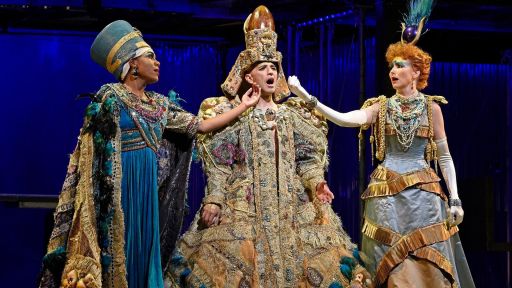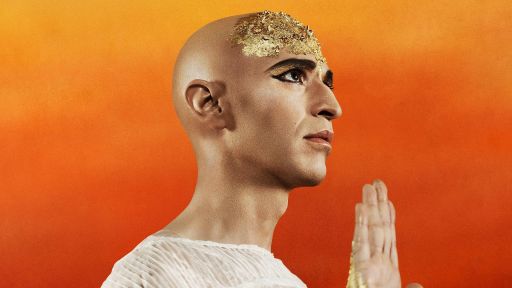By Katelin Levy
Philip Glass is one of the most influential modern composers of the late 20th century. Learning to appreciate all forms of music from his father, who owned a record store, Glass has worked on symphonies, musical theater, film scores, concertos, string quartets, and operas. From his Golden Globe-winning The Truman Show score to his opera, Einstein on the Beach, Glass’ wide range of compositions has led him to be known across the globe for his eclectic repetitive style. While he has enchanted many, he has polarized even more.
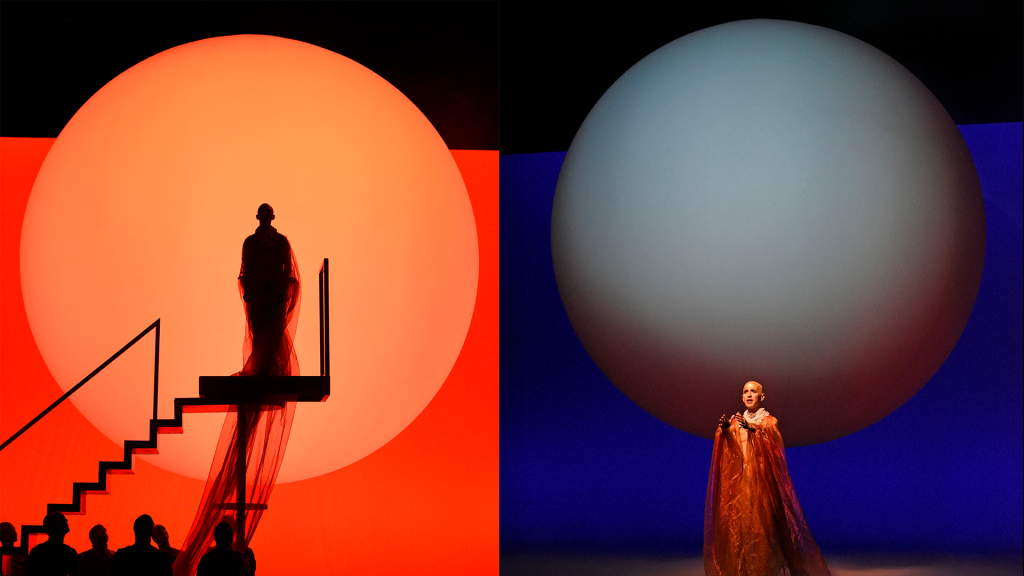
Anthony Roth Costanzo in the title role of Glass’ “Akhnaten.” Photo: Karen Almond / Met Opera
In 1975 after he finished composing Music in 12 Parts, a four-hour-long epic, Glass began to re-examine his work. And so he began writing a series of instrumental works titled, Another Look at Harmony. The first two parts of this series would later be featured in his first opera, Einstein on the Beach, and begin what Glass titled his “Portrait Trilogy.” This trilogy would focus on three influential historical figures, although in 1975, Glass had yet to determine which three would be featured.
Part I: Einstein on the Beach
Most of the libretto for Einstein on the Beach was written in about a year with award-winning director, Robert Wilson, who went onto direct the original production. Great Performances presented the documentary Einstein on the Beach: The Changing Image of Opera in January 1986. This first opera in the “Portrait Trilogy” was performed at the Avignon Festival in July 1976 to mixed reviews. Because of its metaphorical and seemingly plotless style, the opera community in New York was intrigued but confused. The opera has four acts and runs a little over five hours with no intermission, giving Wagner a run for his money. However, because of its free form audiences are encouraged to enter and exit as they please.
While this opera is not easily synopsized, it examines the life of Albert Einstein and how his scientific theories led to the splitting of the atom, celebrating him as a historical figure and scientist whose great achievement only served to unleash the potential for world destruction. The second half of the title is borrowed from a 1957 post-apocalyptic novel, On the Beach, by Nevil Shute, where a group of people in Melbourne, Australia wait for the fallout from nuclear war to reach the Southern Hemisphere.
Part II: Satyagraha
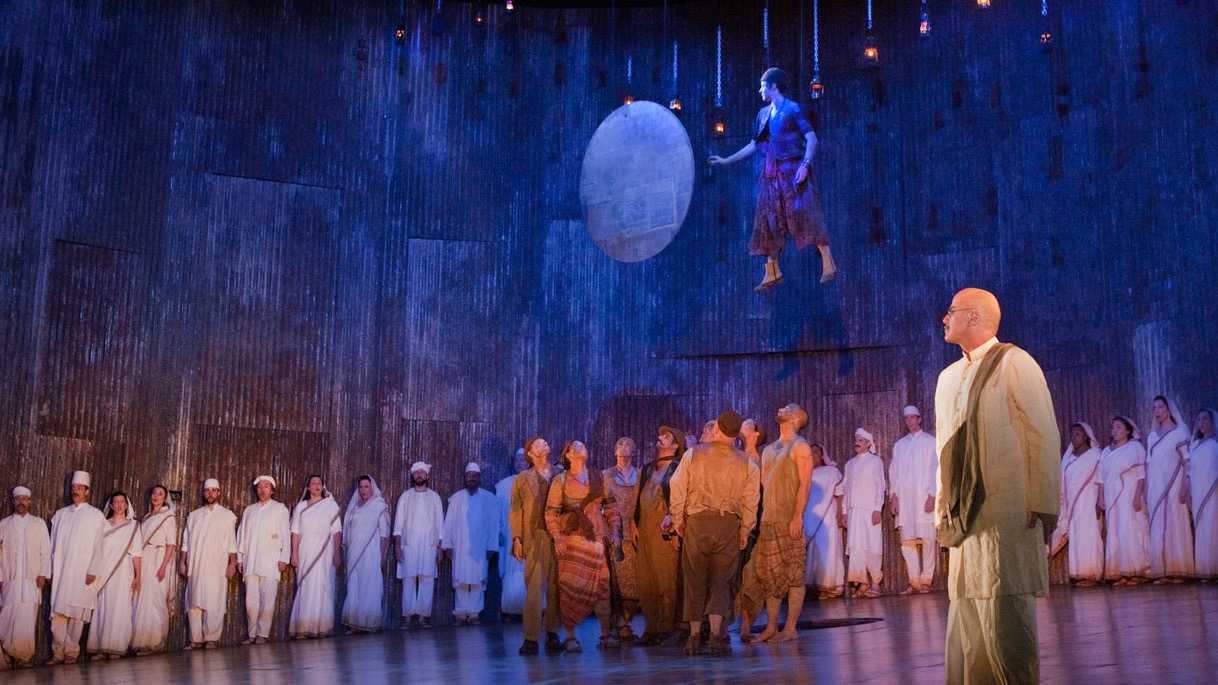
A scene from Glass’ “Satyagraha.” Photo: Met Opera
After receiving a commission from the Netherlands Opera in 1978, Glass began his second opera, Satyagraha. The opera follows the early life of Mahatma Gandhi as he began his political career as a lawyer in South Africa. Originally, Glass wanted this to be the first in the series but Wilson shot the idea down. Wilson wanted to focus on military figures, but since this went against the core idea of the trilogy, Glass and Wilson compromised with Einstein. In Sanskirt, satyagraha means “insistence on truth” and is named to reference Gandhi’s concept of nonviolence.
Although the opera is about Gandhi, each of the three acts is named after a related influential figure, Leo Tolstoy, Rabindranath Tagore, and Martin Luther King Jr., respectively.
Here is the Satyagraha preview from Great Performances at the Met Season 6.
Part III: Akhnaten
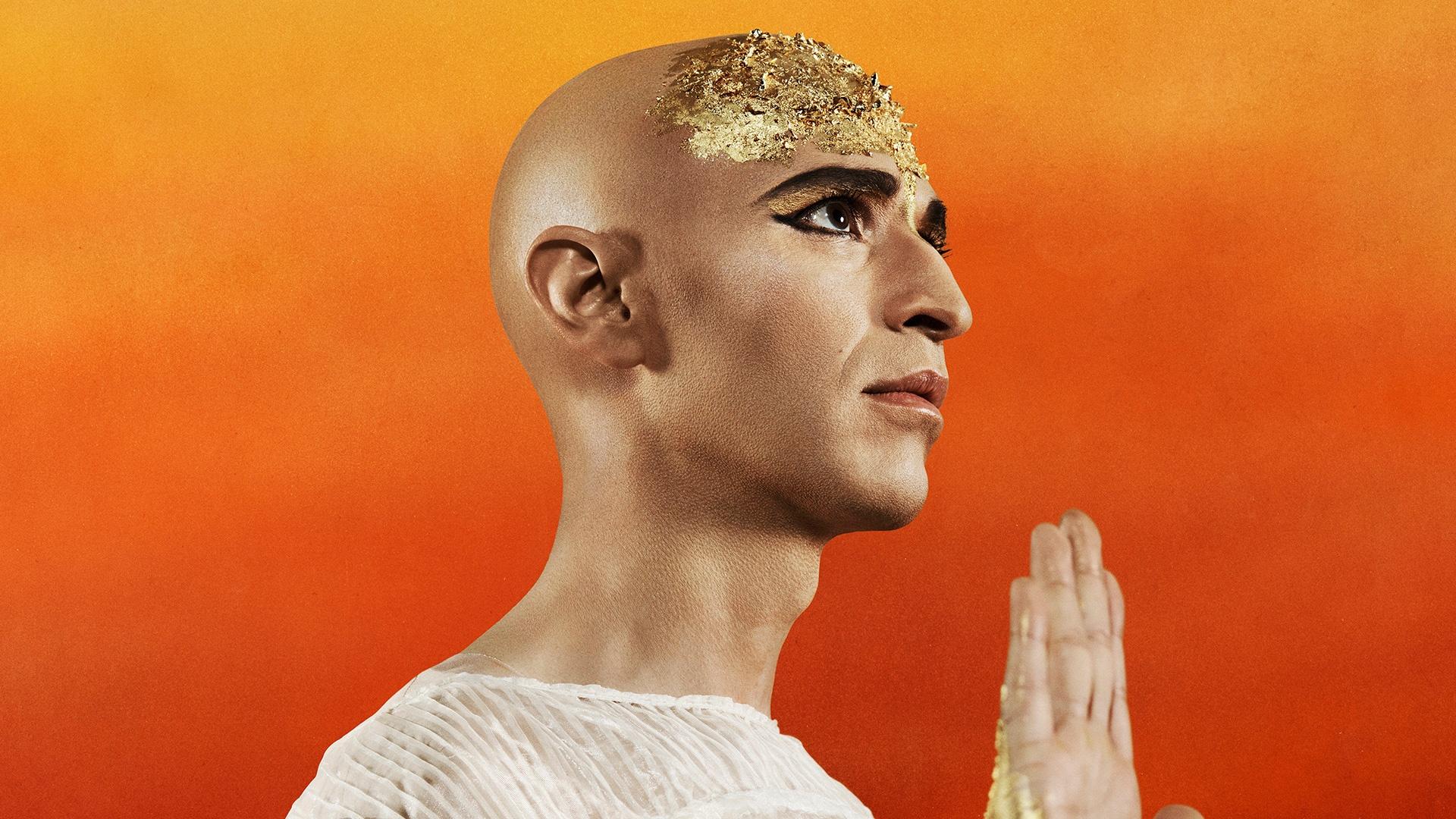
Anthony Roth Costanzo in the title role of Glass’s “Akhnaten.” Photo: Karen Almond / Met Opera
Finally, the last of the trilogy is Akhnaten. Premiering in 1984, Akhnaten follows the short seventeen-year reign of Amenhotep IV, who renamed himself Akhnaten meaning “of Aten.” The sun god, Aten, was the one god that Akhnaten believed in, making him one of the first ancient leaders to venture into monotheism. Unfortunately, not much is known about how the real Akhnaten was removed from power in roughly 1335 B.C.E. because most of his new liturgy and architecture was destroyed and replaced with the old polytheistic religion. Glass believed that Akhnaten represented another transition for his work as he began to explore polytonality.
“The Portrait Trilogy” was complete. Glass’ focus was on thinkers and leaders that changed the course of history with their minds, not their military prowess, even though in the case of Akhnaten the ideas didn’t immediately stick. Most intriguing of these three works is seeing how Glass’ style transformed drastically over the course of eight years. Whether you’re a Glass fan or a critic, one must admit that his compositions create intrigue and demand attention.
To see some of Glass’ composing at work watch Anthony Roth Costanzo as Akhnaten singing an excerpt from Hymn to the Sun.

